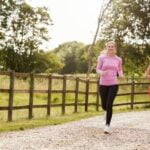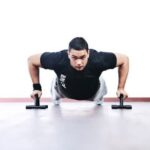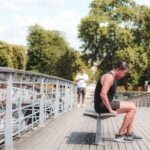The global outbreak of Covid-19 has had a profound impact on various aspects of daily life, including fitness and lifestyle. As the pandemic forced the closure of gyms and fitness centers, individuals were left to navigate new ways to stay active and maintain their overall wellness.
This shift has led to significant changes in exercise routines, mental health practices, nutrition habits, and recreational activities. In this article, we will explore the ways in which Covid-19 has affected the fitness and lifestyle of people around the world, as well as the strategies and adaptations that have emerged in response to these challenges.
The closure of gyms and fitness centers due to Covid-19 disrupted regular exercise routines for many individuals. With limited access to traditional workout facilities, people were forced to find alternative methods to stay physically active while adhering to safety guidelines.
As a result, home workouts became increasingly popular as people sought ways to embrace fitness in the comfort of their own space. This transition not only required a shift in mindset but also prompted individuals to explore new forms of exercise and training techniques.
In addition to physical health, the pandemic has also taken a toll on mental well-being. Coping with stress, anxiety, and feelings of isolation during this uncertain time has become a paramount concern for many.
As such, there has been a growing emphasis on mental health practices and wellness strategies aimed at supporting individuals through these challenges. This includes seeking out virtual support groups and communities, embracing mindfulness practices, and finding healthy coping mechanisms to navigate the psychological impact of the pandemic.
The Closure of Gyms and Fitness Centers
Challenges of Maintaining Physical Activity
For many individuals, visiting the gym or fitness center was an essential part of their exercise routine. The closure of these establishments created challenges in maintaining physical activity and achieving fitness goals. Without access to equipment and structured workout spaces, people had to find alternative ways to stay active.
Adapting Exercise Routines
In response to the closure of gyms and fitness centers, many individuals had to adapt their exercise routines by exploring different workout options. Some turned to at-home workouts using bodyweight exercises, yoga, or cardio routines. Others embraced outdoor activities such as running, cycling, or hiking as a way to stay fit while adhering to social distancing guidelines.
The Impact on Mental Well-Being
The disruption of regular exercise routines also had an impact on mental well-being. Many people rely on physical activity as a means of reducing stress and improving mood. The inability to engage in their usual fitness activities presented challenges in coping with the anxiety and uncertainty brought about by the pandemic. As a result, it became crucial for individuals to find new ways to maintain their physical health while also prioritizing mental wellness during this challenging time.
The Rise of Home Workouts
During the Covid-19 pandemic, the closure of gyms and fitness centers significantly disrupted regular exercise routines for people all over the world. Many individuals who relied on these facilities for their workouts were suddenly left without access to their usual equipment and classes.
As a result, people had to adapt to new ways of staying active and maintaining their fitness levels from the comfort of their own homes. This shift led to a significant increase in the popularity of home workouts as people sought alternative ways to stay in shape during lockdowns and social distancing measures.
One major trend that emerged during this time was the surge in demand for home workout equipment and virtual fitness programs. Sales of items such as dumbbells, resistance bands, yoga mats, and stationary bikes soared as people invested in creating their own home gyms.
Additionally, many fitness professionals and instructors began offering online classes and training sessions, allowing individuals to participate in live or pre-recorded workouts from their living rooms. The convenience and accessibility of home workouts provided an effective solution for those looking to maintain their physical well-being while adhering to stay-at-home orders.
Moreover, embracing home workouts also allowed people to customize their fitness routines according to their personal preferences and schedules. Without the constraints of gym hours or commuting time, individuals had the flexibility to exercise at any time that suited them best. This newfound freedom in structuring one’s workout regimen helped many people stay consistent with their exercise habits even amidst the uncertainty brought about by the pandemic.
| Impact | Data |
|---|---|
| Increase in demand for home workout equipment | Sales of items like dumbbells, resistance bands, yoga mats, etc. soared |
| Rise in popularity of virtual fitness programs | Fitness professionals offering online classes and training sessions |
Mental Health and Wellness
The Covid-19 pandemic had a significant impact on the mental health and wellness of individuals around the world. With the uncertainty and fear surrounding the virus, many people experienced heightened levels of stress and anxiety. The disruption of daily routines, social isolation, and financial concerns all contributed to the decline in mental well-being for many individuals.
Ways to Cope With Stress and Anxiety
During this challenging time, it became crucial for people to find effective ways to cope with stress and anxiety. Many turned to various strategies such as mindfulness meditation, deep breathing exercises, and yoga to help manage their emotions. Additionally, seeking support from mental health professionals through virtual therapy sessions became increasingly common as people looked for ways to address their mental health needs.
The Importance of Self-Care
Amidst the chaos of the pandemic, individuals also began recognizing the importance of self-care in maintaining good mental health. Engaging in activities that brought joy and relaxation, such as taking long walks, practicing hobbies, or simply finding moments of quiet reflection, became essential components in managing stress levels. Furthermore, prioritizing adequate sleep, maintaining a balanced diet, and limiting exposure to negative news were all vital aspects of self-care during this difficult time.
As Covid-19 continues to impact communities worldwide, it is essential for individuals to prioritize their mental health and wellness while navigating through these unprecedented circumstances. By implementing effective coping strategies and embracing self-care practices, it is possible to mitigate the impact of stress and anxiety on overall well-being.
Outdoor Activities and Recreation
During the Covid-19 pandemic, many individuals had to find alternative ways to stay active and maintain their fitness levels due to the closure of gyms and fitness centers. As a result, outdoor activities and recreation became increasingly popular as people sought new ways to stay active safely.
Embracing the Great Outdoors
With limited access to indoor exercise facilities, many turned to outdoor activities such as hiking, biking, running, and walking as a way to stay fit. Outdoor spaces provided a safe environment for individuals to exercise while adhering to social distancing guidelines. This shift towards outdoor activities not only allowed people to stay active but also provided an opportunity for fresh air and sunlight, which are essential for both physical and mental well-being.
Family Bonding and Recreation
The pandemic also presented an opportunity for families to bond over outdoor activities. Many families took up recreational activities such as camping, fishing, or playing sports together in order to stay active and spend quality time with one another amidst the challenging circumstances. This not only promoted physical fitness but also fostered stronger family connections during a time of uncertainty.
Connecting With Nature
Engaging in outdoor activities allowed individuals to connect with nature in a meaningful way. Whether it was exploring local parks or finding new hiking trails, many people found solace in nature during a time of heightened stress and anxiety. Being surrounded by the beauty of the outdoors provided a sense of calmness and tranquility that was much needed during the pandemic.
Overall, the shift towards outdoor activities and recreation offered individuals an alternative way to stay active while adapting to the changes brought about by Covid-19. These experiences have led many people to reevaluate their relationship with nature and consider incorporating more outdoor activities into their daily routines even as restrictions ease.
The Shift in Nutrition and Diet
The Covid-19 pandemic has brought about significant changes in the way people approach nutrition and diet. With stay-at-home orders and the closure of restaurants, individuals have had to adapt to new eating habits and meal planning strategies. This shift has not only impacted physical health but also mental well-being, as people navigate through uncertainties and anxieties caused by the global health crisis.
One of the key ways Covid-19 has affected nutrition and diet is through the increased consumption of home-cooked meals. With limited dining-out options, many have turned to preparing their own meals at home. This has resulted in a greater emphasis on healthier cooking methods and ingredient choices, as individuals prioritize their overall well-being during these challenging times.
Furthermore, the economic impact of the pandemic has also influenced dietary changes for many individuals and families. With financial constraints affecting shopping budgets, there has been a greater focus on cost-effective yet nutritious meal planning. This has led to more creative approaches to cooking and meal preparation, as people seek to maintain a balanced diet while managing limited resources. Overall, Covid-19 has prompted a reevaluation of eating habits and a shift towards more mindful and intentional food choices.
Another aspect of this dietary adaptation during Covid-19 is the increased awareness of immune-boosting foods and nutritional supplements. Individuals have become more conscious of enhancing their immune system through nutrient-dense foods, vitamins, and herbal remedies.
The desire to support overall health and wellness in response to the pandemic has sparked a renewed interest in holistic nutrition approaches. As we continue to navigate through these uncertain times, it is evident that Covid-19 has significantly influenced how people approach nutrition and diet, leading to a greater emphasis on healthy eating habits, cost-effective meal planning, and immune-boosting nutritional choices.
Virtual Fitness Communities
The Covid-19 pandemic has brought about significant changes in the fitness and lifestyle habits of people around the world. With gyms and fitness centers being closed as part of lockdown measures, individuals were forced to find new ways to stay active and connected with like-minded individuals. Virtual fitness communities quickly emerged as a popular and effective way to stay motivated and seek support online during these challenging times.
Many people turned to social media platforms, fitness apps, and online forums to connect with others who shared similar fitness goals and challenges. Virtual workout classes conducted through video conferencing platforms became increasingly popular, allowing participants to engage in live workouts led by experienced instructors from the comfort of their own homes.
This shift towards virtual fitness communities not only provided a sense of connection and accountability but also offered individuals the opportunity to access a wide range of workout options tailored to their specific needs and preferences.
The impact of virtual fitness communities goes beyond just physical exercise; it also addressed the mental health aspect of staying active during the pandemic. By connecting with others online, individuals were able to combat feelings of isolation, anxiety, and stress that may have been exacerbated by the pandemic. The sense of community fostered within virtual fitness groups allowed participants to encourage each other, share experiences, and seek much-needed emotional support.
| Virtual Fitness Communities Statistics | Data |
|---|---|
| Percentage increase in virtual workout class participation | 70% |
| Number of new virtual fitness communities formed during the pandemic | Over 1000 |
Personal Growth and Reflection
The global pandemic brought about by Covid-19 has undoubtedly disrupted the fitness and lifestyle habits of individuals worldwide. Many gyms and fitness centers were forced to close their doors temporarily, leaving regular gym-goers without access to their usual exercise routines. As a result, people had to find alternative ways to stay active and maintain a healthy lifestyle while adhering to social distancing guidelines and lockdown measures.
During this challenging time, individuals began to embrace home workouts as a convenient and safe way to exercise. The closure of gyms led to a significant rise in the popularity of virtual workout classes, online personal training sessions, and fitness apps that provided users with guided workout programs. This shift towards home-based exercise not only allowed people to continue prioritizing their physical health but also offered the flexibility of working out on their own schedule.
In addition to focusing on physical health, many individuals also turned their attention towards mental wellness during the pandemic. Coping with stress and anxiety became a top priority for many, leading to an increased emphasis on practices such as meditation, mindfulness, and relaxation techniques. Engaging in activities that promoted mental well-being became essential for balancing the challenges brought about by Covid-19 and maintaining overall holistic health.
The Future of Fitness and Lifestyle
In conclusion, the Covid-19 pandemic has undoubtedly brought about significant changes in the way people approach fitness and lifestyle. The closure of gyms and fitness centers disrupted regular exercise routines for many individuals, forcing them to find alternative ways to stay active.
This led to the rise of home workouts, with people embracing fitness in the comfort of their own space. Additionally, outdoor activities and recreation became popular as people sought new ways to stay active safely while adhering to social distancing guidelines.
The pandemic also had a profound impact on mental health and wellness, with many individuals coping with increased stress and anxiety. However, it also prompted personal growth and reflection, as people found positives in the midst of adversity. Furthermore, there was a shift in nutrition and diet, as individuals adapted to changes in eating habits and meal planning. Virtual fitness communities also played a crucial role during this time, allowing people to connect with others and seek support online.
As we look towards the future of fitness and lifestyle post-pandemic, it is essential that we continue adapting to changes and embrace a new normal. The lessons learned during this time will likely shape the way we approach health and wellness moving forward.
It’s clear that the pandemic has highlighted the importance of prioritizing physical and mental well-being, and it will be crucial for individuals to carry these lessons forward as they navigate a post-pandemic world. Overall, Covid-19 has reshaped how we approach fitness and lifestyle, but it has also provided an opportunity for growth and resilience.
Frequently Asked Questions
How Did COVID-19 Affect Exercise?
COVID-19 significantly affected exercise habits around the world. With lockdowns and restrictions in place, many people found it challenging to maintain their usual exercise routines. Gyms, parks, and recreational facilities were closed, leading to a decrease in physical activity for many individuals.
How Did COVID-19 Impact People’s Lives?
The impact of COVID-19 on people’s lives has been profound. The pandemic led to job losses, financial strain, social isolation, and increased stress and anxiety. Many individuals also experienced disruptions in their daily routines and struggled with feelings of uncertainty about the future.
What Is the Importance of Being Physically Fit Now That We Are Facing the Covid-19 Pandemic?
Being physically fit is more important than ever during the COVID-19 pandemic. Regular exercise strengthens the immune system, reduces the risk of chronic diseases, and helps manage stress and anxiety. Physical fitness also plays a crucial role in maintaining overall health and well-being during these challenging times.

Passionate about providing useful information to anyone with an interest in the field of Personal Training, I strive to pass on to our readers quality information and to answer any questions about Personal Trainers, the work they do and how to become one.





